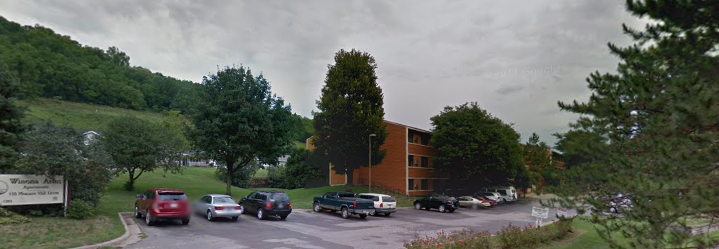
Investing in Impact
Investing in Impact
A growing number of philanthropies are investing in social enterprises that aim to do good by doing well. This Minnesota initiative is leading the way.
The notion of doing good and doing well is not new, but the surge of interest in impact investing is spreading among foundations large and small. Impact investing advances social goals while also earning financial returns. By comparison, traditional philanthropy gives money outright to advance specific causes such as poverty alleviation, community revitalization and environmental stewardship.
Foundations pay out at least 5 percent of the annual value of their investment assets for charitable purposes. Traditionally, the other 95 percent of a foundation’s assets are invested to grow its endowment for future grants. Impact investments allow foundations to use some of that 95 percent to further a foundation’s mission as well as generate financial returns. National foundations such as the Ford Foundation, MacArthur Foundation and the Heron Foundation are leading the way.
I worked my way into impact investing as a first step in what has become a lifelong journey to harness the power of the private sector for social good. This journey started more than 20 years ago at Prudential Financial Impact Investments where I managed an $80 million portfolio of loans in health care, affordable housing and economic development. One of my loans supported the first grocery store built in Newark since the 1967 protests.
Fast forward to 2016, where I currently serve as the first executive in residence at the Minnesota Council on Foundations (MCF) charged with involving more Minnesota foundations in impact investing. MCF President Trista Harris, a philanthropic futurist, believes the practice will become the norm. “In the not-too-distant future, I believe foundations activating 100 percent of assets for mission will become the rule rather than the exception,” she said.
Some of Minnesota’s large foundations have been involved in impact investing for years. The McKnight Foundation, for example, invests 20 percent of its endowment on mission-aligned strategies in addition to its ongoing 5 percent commitment to giving.
Impact investments allow foundations to use some of their assets to further a foundation’s mission as well as generate financial returns.
Working with Mellon Capital Management, for instance, McKnight seeded a new Carbon Efficiency Strategy fund with $100 million. The fund helps McKnight tilt its investment toward companies producing fewer carbon emissions, in direct support of its mission.
“With about 1,000 holdings, the fund reduces the carbon intensity of our investment by 53 percent compared to benchmark,” explains Elizabeth McGeveran, McKnight’s impact investing program director.
Another long-time practitioner of impact investing is the Minneapolis Foundation which, long before the term was coined, was using impact investing tools to help not-for-profit organizations achieve their missions.
For example, the Foundation helped organize a loan fund that enabled minority-owned and female-owned businesses to participate in the construction of a new billion-dollar stadium for the Minnesota Vikings, which was approved by the Minnesota legislature in 2012. The project aimed to use 11 percent female-owned and nine percent minority-owned contractors. However, without intentional efforts to level the playing field, the stadium would not be the inclusive project the legislature envisioned.

Impact investment strategies helped ensure that the project to rebuild Vikings Stadium in Minneapolis benefited the broader community, including women- and minority-owned businesses. Image credit: Minnesota Council on Foundations
Due to shorter business histories, narrower asset bases and limited access to conventional financing, the only sources of working capital for minority-owned businesses are expensive ones. To fill this need, the Foundation created a Working Capital Loan Fund that provided working capital at a reasonable cost and leveraged the stadium’s benefit across the entire community.
The fund was a three-year $1 million loan to a nonprofit lender that made cash-flow loans to minority-owned businesses. As loans were repaid, the funds were redeployed to assist other businesses. As of October 2015, the fund had made nine loans to minority-owned construction companies, supporting the equivalent of 181 well-paying, full-time jobs.
“Without the $200,000 working capital loan, we wouldn’t have been able to do the job,” said Dave Bice, owner of Bald Eagle Erectors and a member of the White Earth Band of Ojibwe. “I had a big job that wasn’t paying me on time, and I wasn’t making enough profit for the bank to make a conventional working-capital loan on this project,” he told the Star Tribune newspaper.
A third example is the Saint Paul Foundation, which found that a combination of grants, loans and investments can accelerate change, especially in hard hit communities. Faced with steep job losses in St. Paul (down 13.4 percent from 2000 to 2011), the foundation identified locally–owned businesses as major job creators and established a loan fund focused on creating good jobs for people of color.
When the foundation reached out for technical help to design and launch the fund, I had the good fortune to get the call. I’m particularly proud that the foundation followed our best practice research and combined grants with loans to launch the new program. With $2.1 million in loan capital, supplemented with grant support, the East Metro Job Creation Loan Fund works through nonprofit partners to provide job creation capital.
Since early 2014, 31 low-interest loans to 29 small businesses have been processed, creating 163 new jobs with 80 more projected. The jobs pay an average of $17 to $22 per hour; 60 percent offer health benefits, and half of the positions are filled by people of color. The funds are now beginning to recirculate. Every $1 from the fund has leveraged an additional $4.50 for borrowers, and several business owners have now built sufficient credit history to be considered bankable by traditional lenders.
One of the individuals benefitting from this opportunity was Zer Khang, who founded Green Light Architectural Sheet Metal, Minnesota’s first Hmong-owned commercial construction company. After receiving start-up training and financing, he created five jobs paying an average of $35 per hour with full health and pension benefits. He expects continued growth.
Today, my mission is to encourage even more foundations to adopt this model. As executive in residence, I’m on call one day a week to guide foundation staff and trustees interested in this model, share best practices and help foundations work together on impact investing opportunities.
At the start of my residency, I hoped research, communication and connections would lead to activating local philanthropic capital for impact. Already, in one year, we’ve gone much further.

Winona Arms is an assisted living facility for low-income seniors that has benefited from impact investment. Image credit: Minnesota Council on Foundations.
In early 2017, the Minnesota Council on Foundations announced the Minnesota impact investing collaborative fund, a first-of-its-kind in the nation initiative. There is already more than $18.3 million committed, and we expect the fund’s total to exceed $20 million. Three large MCF members anchor the fund, and at least half a dozen others, including community foundations, small family foundations and rural foundations, are bringing the opportunity through their internal review processes.
It is the first time that many of the organizations are using their endowments for good. Grantmaking for all continues unabated. The money is invested in a fixed income bond fund focused on affordable housing and small business lending throughout Minnesota. The Winona Arms Assisted Living Facility in Winona, Minnesota, is a typical RBC Access Capital investment. Winona Arms helps very low-income elderly live independently by providing support activities such as cleaning, cooking and transportation. Minnesota investors appreciate being able to target local projects.
These Minnesota-based initiatives are a few that have built awareness of foundations putting their endowments to work while continuing their charitable giving, with the result of more money working for the common good in our communities.
As a philosophy major in college, I was trained to ask “why?” In the world of philanthropy, that question still matters. Where is the money going? Where is it coming from? Who benefits? And when you have a life mission to change the world – as I do – the answers matter even more.
Susan Hammel, CFA, is executive in residence at the Minnesota Council on Foundations, and president of Cogent Consulting. Tweet her @susan_hammel or email shammel@mcf.org
Philanthropy
Minnesota Council on Foundations
Project
Impact Investment


